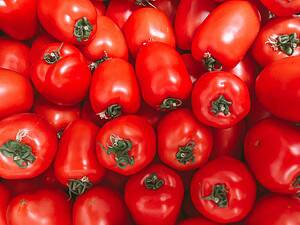Introduction
If you’re an importer, distributor, or food manufacturer sourcing large volumes of tomato paste, then minimizing your tomato paste drum purchase price is critical to maintaining healthy margins. While prices are influenced by global factors like raw material costs and freight rates, there are strategic steps you can take to secure better pricing—especially when buying in bulk.
In this guide, we’ll share the Top 5 proven strategies to reduce your tomato paste drum costs without compromising quality or supply reliability.
1. Buy During Off-Season or Pre-Harvest Periods
🕒 Why It Matters:
Tomato paste prices fluctuate based on seasonal cycles. Most processors harvest and process between July and October, leading to price dips right after harvest (Aug–Nov) and increases in Q1–Q2 the following year due to tight inventories.
✅ Action Step:
- Plan purchases in off-peak months (Jan–Mar or directly after harvest)
- Negotiate annual contracts during the pre-harvest period for best rates
💡 Pro Tip: Lock in pre-harvest prices with suppliers in China or Turkey by committing to FCL volumes.
2. Choose the Right Brix Level and Specifications
🧪 Why It Matters:
The Brix level (°Bx) indicates the concentration of the tomato paste. The higher the Brix, the more tomatoes are needed to produce it—resulting in a higher price per MT.
| Brix | Use Case | Price Impact |
|---|---|---|
| 28–30° | General culinary use | Lower cost |
| 30–32° | Industrial, sauces, repacking | Higher cost |
✅ Action Step:
- Match Brix level to your exact processing needs. Don’t over-specify if 28–30 Brix meets your requirement.
- Confirm if 28–30° Brix works for your application to reduce unit cost by 5–8%.
3. Optimize Freight and Incoterms
🚢 Why It Matters:
Freight and inland logistics can add $50–150/MT depending on your destination and Incoterm (EXW, FOB, CIF).
✅ Action Step:
- Consolidate multiple orders into full container loads (FCL)
- Work with suppliers near major ports (e.g., Qingdao, Tianjin, İzmir)
- Compare FOB vs CIF: Sometimes arranging freight yourself can save money
💡 Ask for multi-origin quotes (e.g., China and Turkey) to optimize shipping routes and costs.
4. Negotiate Bulk Volume Discounts and Flexible Terms
🤝 Why It Matters:
Most manufacturers offer tiered pricing based on volume. The difference between 1 FCL (22 MT) and 3–5 FCLs can save you $30–50/MT.
✅ Action Step:
- Ask for volume-based pricing in increments (1 FCL, 3 FCLs, 5 FCLs)
- Offer flexible payment terms (e.g., partial TT in advance) for better deals
- Establish long-term relationships with suppliers to get priority pricing
5. Source from Competitive Origins like China
🌍 Why It Matters:
While Italy, Spain, and Chile produce high-quality paste, China remains the most price-competitive source, especially for 220L drums.
| Origin | Price Competitiveness | Notes |
|---|---|---|
| China | ★★★★★ | Largest exporter, strong capacity |
| Turkey | ★★★★☆ | Competitive and closer to Europe |
| Italy | ★★☆☆☆ | Premium quality, higher price |
| Chile | ★★★☆☆ | Seasonal balance, limited output |
✅ Action Step:
- Source standard products like 28–30° or 30–32° Brix paste in 220L drums from Chinese manufacturers
- Look for exporters with ISO/BRC certifications to ensure quality and food safety
💡 Work with experienced export companies who offer consolidated supply, documentation, and stable supply chains.

